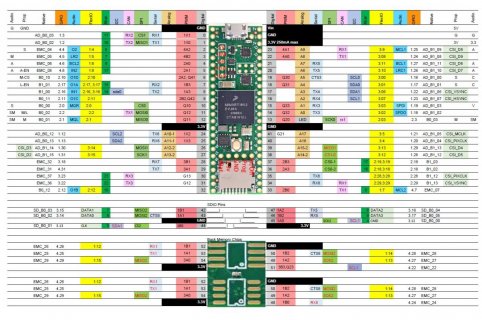Swarfmaker
Member
I've spent a couple of hours now trying to figure out what the "pre-defined" names of the digital I/O ports are.
In the Arduino, the ports are assigned letters, like PortA, PortB, PortC, PortD.
On this page, there is a nice table that shows which pins are assigned which port letters, but it is for the T2.0.
https://www.pjrc.com/teensy/td_digital.html
Is there such a table for the T4.1??? Does anyone know where I can find documentation for what the digital I/O pin assignments are?
Thanks!
In the Arduino, the ports are assigned letters, like PortA, PortB, PortC, PortD.
On this page, there is a nice table that shows which pins are assigned which port letters, but it is for the T2.0.
https://www.pjrc.com/teensy/td_digital.html
Is there such a table for the T4.1??? Does anyone know where I can find documentation for what the digital I/O pin assignments are?
Thanks!


